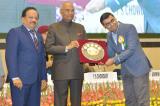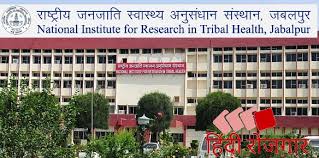Human saliva contains electrolytes, mucus, enzymes for digestion and certain antibacterial compounds. But many of us may not be aware that a range of bacteria is also present in our saliva. Moreover, the type of bacteria present in saliva differs from population to population.
A new study has now revealed that saliva of Indians is quite diverse and rich in its bacterial content. The study is based on the first comprehensive survey of salivary microbiome - bacterial cells present in saliva - across different population groups in the country
Scientists from the Hyderabad-based Centre for DNA Fingerprinting and Diagnostics (CDFD) analyzed saliva from 92 healthy volunteers. The volunteers were selected from three regions - North (Jammu & Kashmir and Uttarakhand), East (Jharkhand, West Bengal, and Assam) and South (Andhra Pradesh, Tamil Nadu and Telangana). Using the method of sequencing 16S rRNA gene (a marker region of bacterial genome), they identified 165 bacterial genera and 785 unique ‘operational taxonomic units’ or OTUs which is a unit of microbial diversity that groups together closely related microorganisms.
N Madhusudan Reddy Mark Stoneking
" There is immense bacterial richness in salivary microbiome in Indian populations. Given the extraordinary genetic and cultural diversity of Indian populations, the Indian subcontinent is a natural laboratory for further such investigations,” said Dr. N Madhusudan Reddy of CDFD
It was found that certain OTUs were unique to Indian population and had not been previously reported anywhere else. Nine bacterial genera not listed in the global database - Human Oral Microbiome Database (HOMD) – have also been identified in saliva of Indians.
“There is immense bacterial richness in salivary microbiome in Indian populations. Given the extraordinary genetic and cultural diversity of Indian populations, the Indian subcontinent is a natural laboratory for further such investigations,” said Dr. N Madhusudan Reddy of CDFD and a co-author of the study published in journal PLOS One.
Dr. Mark Stoneking of the Max Planck Institute for Evolutionary Anthropology, Germany, who has co-authored the study, pointed out that “traditionally such studies have been carried out in populations from Europe or America. There is tremendous diversity in the saliva microbiome of Indian populations that is not present at all in European and US populations.”
A person’s susceptibility to disease is dependent to a large extent on their body’s microbial composition, explained Dr. Stoneking. Thus, it is critical to have a baseline database of the unique microbiome of different populations for future studies. “The degree to which differential distribution of oral microbiome might contribute to different patterns of disease in Indian populations could be an important focus of further studies,” added Dr. Reddy.
Human bodies carry as many bacterial cells as the number of human cells. These comprise of ‘good’ or health promoting and ‘bad’ or disease causing bacteria. The type of bacteria varies depending upon their location in the body. Identifying these bacteria is important for understanding the balance between health and disease as well as genetic diversity among populations.
The research team included Anujit Sarkar, Dr. Mark Stoneking and Dr. N Madhusudan Reddy. The study was funded by the Department of Science and Technology (DST) and the Max Planck Society. (India Science Wire)

